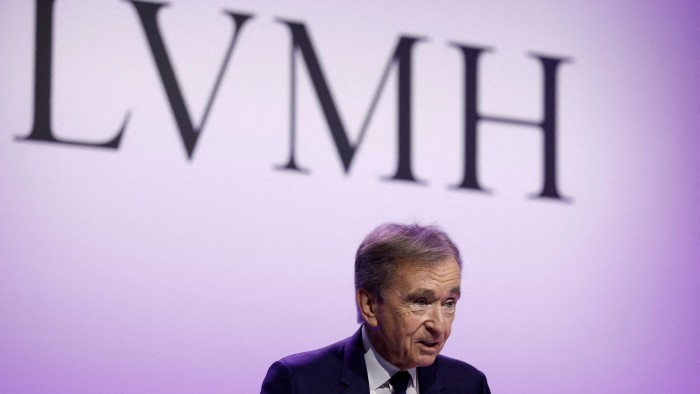Unlock the Editor’s Digest for free
Roula Khalaf, Editor of the FT, selects her favourite stories in this weekly newsletter.
Like the exquisite yarn of the Andean vicuña, the conglomerate is becoming an exotic rarity. The corporate need for nimbleness means such beasts seem increasingly headed towards extinction. There is an exception, though: the world of luxury goods.
While consumer groups Reckitt and Unilever moult divisions, and industrials Honeywell and BP bow to pressure from activist fund manager Elliott Management, companies that cater to the style-conscious elites have resisted the deconstructionary trend.
Luxury multi-brand portfolios share features with industrial conglomerates. There are often few synergies to be had in sourcing materials or distributing products. Unlike multi-brands in home and personal care, luxury maisons tend to have specialised suppliers and dedicated shops.
Yet there is barely a monobrand left on the rack. Bernard Arnault’s LVMH showcases Louis Vuitton, Dior, Céline, Bulgari and Tiffany, among others. Francois Pinault’s Kering holds Gucci, Saint Laurent, Bottega Veneta and much more besides. Moncler recently bought Stone Island. And reports that Italy’s Prada is running its slide rule over Versace have sparked talk of the birth of an Italian luxury conglomerate.
What, then, explains the enduring appeal of the luxury behemoth? Scale is still useful, albeit in less obvious ways. When LVMH negotiates store space in a new luxury mall, for instance, it can use its big brands to get a better deal for the smaller ones. Ditto advertising rates. Hotshot designers joining a conglomerate know that, if they shine at a maison, they will be moved up the pecking order. See, for instance, ongoing speculation that Jonathan Anderson may move from Loewe to Dior.
Being big is also helpful given luxury groups appear to be involved in a giant game of Monopoly, buying expensive real estate in prime locations. Smaller groups like Prada are playing this game, but it is surely easier for the likes of LVMH — with a market capitalisation of almost €320bn — to buy up Bond Street.
The freedom to sprawl is not limitless. While LVMH’s stable of fashion and leather goods brands may well belong together — and, indeed, provide a model for the other would-be luxury conglomerates to follow — it is not entirely clear that its drinks and retail divisions do.
Wines and spirits accounts for 7 per cent of LVMH’s group operating profit in 2024 which, as Bernstein analysts point out, is down from about 40 per cent in the late 1990s. And their continued existence may turn off some investors — particularly in the Middle East — from investing in LVMH. Meanwhile, retailers Sephora and DFS have lower margins than luxury goods. It’s not clear they belong in the clutch.
Sloughing such divisions off might not unlock big share price increases. But simplicity, speed and management time are precious resources. Fashionistas can make an ensemble out of unlikely items, but sometimes a clash is just a clash.
